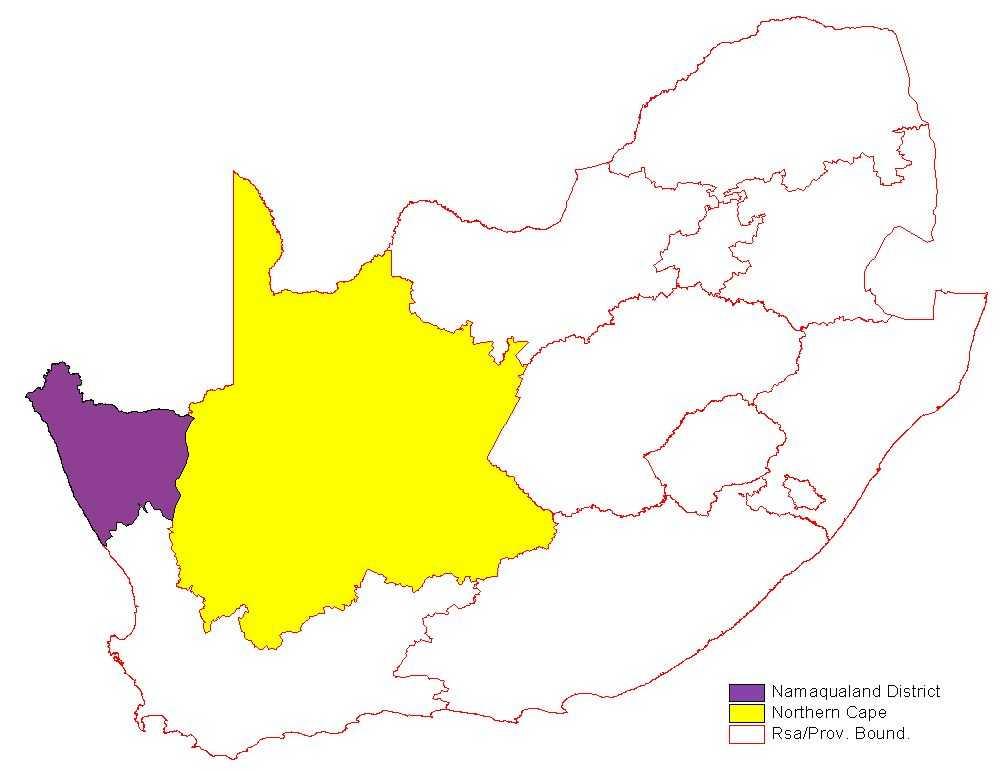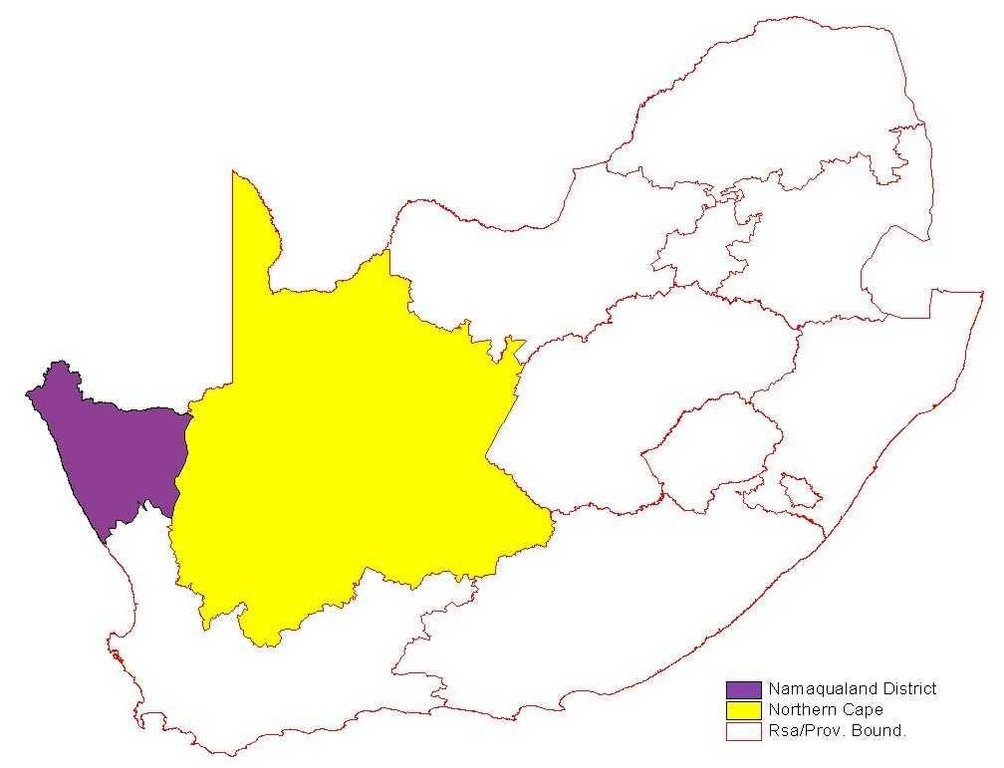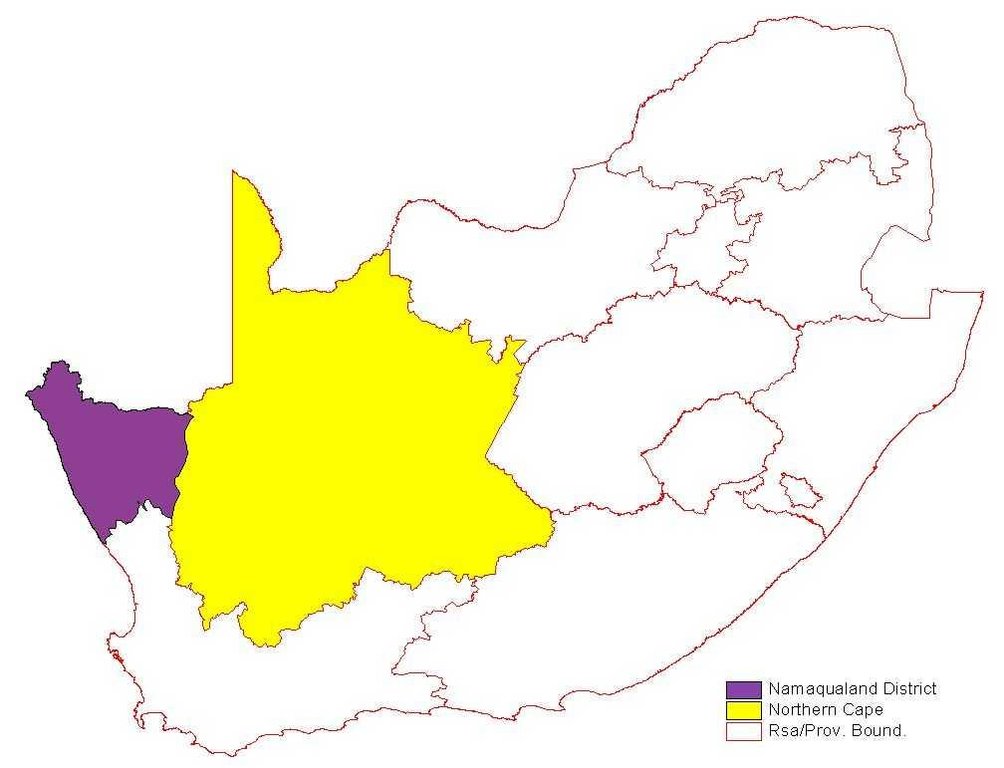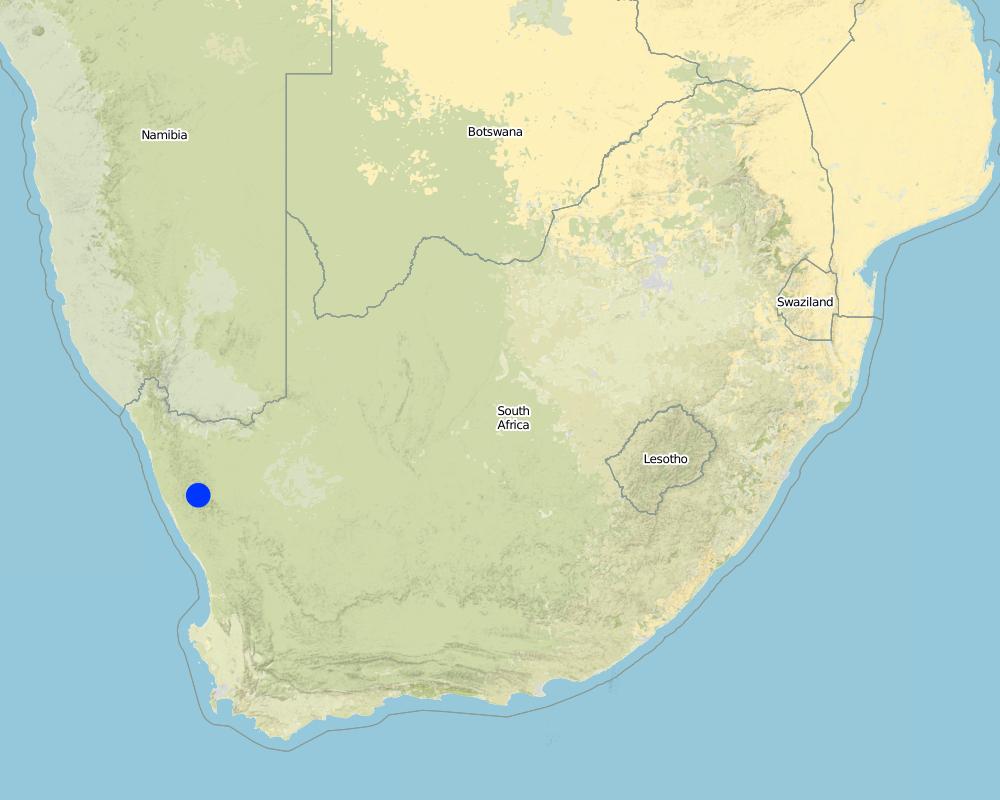Awareness raising [South Africa]
- Creation:
- Update:
- Compiler: Belly Mpoko Malatji
- Editor: –
- Reviewer: Fabian Ottiger
approaches_2344 - South Africa
View sections
Expand all Collapse all1. General information
1.2 Contact details of resource persons and institutions involved in the assessment and documentation of the Approach
Name of the institution(s) which facilitated the documentation/ evaluation of the Approach (if relevant)
Dept. of Agriculture, Northern Cape (Dept. of Agriculture, Northern Cape) - South Africa1.3 Conditions regarding the use of data documented through WOCAT
The compiler and key resource person(s) accept the conditions regarding the use of data documented through WOCAT:
Yes
1.4 Reference(s) to Questionnaire(s) on SLM Technologies
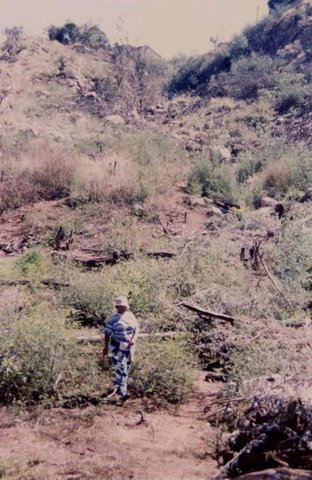
Combating of invader plants and bush packing [South Africa]
The combating of Invaders to preserve water resources & the rehabilitation of the bare ground by means of brush packing to prevent soil erosion.
- Compiler: Unknown User
2. Description of the SLM Approach
2.1 Short description of the Approach
To make the people aware of veld degradation, rehabilitation & the participation of the people
2.2 Detailed description of the Approach
Detailed description of the Approach:
Aims / objectives: Improve standard of living of community members by making handcrafts and selling wood. It is an approach where the community is fully involved (a demand driven project). Training of the people to do packing and cutting of branches.
2.3 Photos of the Approach
2.5 Country/ region/ locations where the Approach has been applied
Country:
South Africa
Region/ State/ Province:
Northern Cape
Map
×2.7 Type of Approach
- project/ programme based
2.8 Main aims/ objectives of the Approach
The Approach focused mainly on SLM with other activities (Rehabilitation (veld reinforcement))
Community awareness. Training. Education
The SLM Approach addressed the following problems: Language. Literacy. Understanding of the social & cultural structure
2.9 Conditions enabling or hindering implementation of the Technology/ Technologies applied under the Approach
social/ cultural/ religious norms and values
- hindering
Treatment through the SLM Approach: Lobbed with indigenous people that is familiar with the people & the area
availability/ access to financial resources and services
- hindering
Treatment through the SLM Approach: NGO's financial support
legal framework (land tenure, land and water use rights)
- hindering
The existing land ownership, land use rights / water rights greatly hindered the approach implementation People don't own the land
knowledge about SLM, access to technical support
- hindering
Treatment through the SLM Approach: Training of land users
3. Participation and roles of stakeholders involved
3.1 Stakeholders involved in the Approach and their roles
- local land users/ local communities
Community
Working land users were mainly women. Communication break down
- NGO
Food & social
- national government (planners, decision-makers)
- international organization
Agriculture
3.2 Involvement of local land users/ local communities in the different phases of the Approach
| Involvement of local land users/ local communities | Specify who was involved and describe activities | |
|---|---|---|
| initiation/ motivation | none | |
| planning | interactive | Mainly: public meetings, rapid/participatory rural appraisal; partly: interviews/questionnaires |
| implementation | interactive | Mainly: responsibility for minor steps; partly: responsibility for major steps |
| monitoring/ evaluation | none | |
| Research | none |
3.4 Decision-making on the selection of SLM Technology/ Technologies
Specify who decided on the selection of the Technology/ Technologies to be implemented:
- mainly SLM specialists, following consultation with land users
Explain:
consultative.
Decisions on the method of implementing the SLM Technology were made by mainly by SLM specialists with consultation of land users. land user driven (bottom-up).
4. Technical support, capacity building, and knowledge management
4.1 Capacity building/ training
Was training provided to land users/ other stakeholders?
Yes
Specify who was trained:
- land users
- school children/students, politicians/decision mak
Form of training:
- on-the-job
- demonstration areas
- public meetings
- courses
Subjects covered:
Rehabilitation, degradation, production increase, awareness, branch packing
4.2 Advisory service
Do land users have access to an advisory service?
Yes
- Homes of community members
Describe/ comments:
1) Mainly: government's existing extension system, Partly: non-governmental agency 2) Mainly: government's existing extension system, Partly: non-governmental agency; Extension staff: mainly government employees 3) Target groups for extension: land users,
Advisory service is quite adequate to ensure the continuation of land conservation activities
4.3 Institution strengthening (organizational development)
Have institutions been established or strengthened through the Approach?
- yes, greatly
Specify the level(s) at which institutions have been strengthened or established:
- local
Specify type of support:
- capacity building/ training
4.4 Monitoring and evaluation
Is monitoring and evaluation part of the Approach?
Yes
Comments:
bio-physical aspects were regular monitored
technical aspects were ad hoc monitored
socio-cultural aspects were regular monitored
economic / production aspects were regular monitored
area treated aspects were regular monitored
no. of land users involved aspects were regular monitored
management of Approach aspects were regular monitored
There were few changes in the Approach as a result of monitoring and evaluation: More people get involved, more meetings
4.5 Research
Was research part of the Approach?
Yes
Give further details and indicate who did the research:
Research was carried out on-farm
5. Financing and external material support
5.1 Annual budget for the SLM component of the Approach
If precise annual budget is not known, indicate range:
- < 2,000
Comments (e.g. main sources of funding/ major donors):
Approach costs were met by the following donors: government (national): 80.0%; international non-government (-): 10.0%; local community / land user(s) (-): 10.0%
5.2 Financial/ material support provided to land users
Did land users receive financial/ material support for implementing the Technology/ Technologies?
Yes
5.3 Subsidies for specific inputs (including labour)
- equipment
| Specify which inputs were subsidised | To which extent | Specify subsidies |
|---|---|---|
| tools | fully financed | |
- agricultural
| Specify which inputs were subsidised | To which extent | Specify subsidies |
|---|---|---|
| seeds | fully financed | |
| fertilizers | fully financed | |
- infrastructure
| Specify which inputs were subsidised | To which extent | Specify subsidies |
|---|---|---|
| Community infrastructure | fully financed | |
If labour by land users was a substantial input, was it:
- paid in cash
5.4 Credit
Was credit provided under the Approach for SLM activities?
No
6. Impact analysis and concluding statements
6.1 Impacts of the Approach
Did the Approach help land users to implement and maintain SLM Technologies?
- No
- Yes, little
- Yes, moderately
- Yes, greatly
Control grazing, look after the rangelands
Did the Approach improve issues of land tenure/ user rights that hindered implementation of SLM Technologies?
- No
- Yes, little
- Yes, moderately
- Yes, greatly
People must increase field land on behalf of the cattle - it is not their own land
Did other land users / projects adopt the Approach?
- No
- Yes, little
- Yes, moderately
- Yes, greatly
6.3 Sustainability of Approach activities
Can the land users sustain what has been implemented through the Approach (without external support)?
- yes
If yes, describe how:
Only financial support
6.4 Strengths/ advantages of the Approach
| Strengths/ advantages/ opportunities in the land user’s view |
|---|
| Training of extension officers |
| Strengths/ advantages/ opportunities in the compiler’s or other key resource person’s view |
|---|
| Community participation |
| Awareness |
| Technology transfer |
| Improve life standard |
| Better understanding of social structure |
6.5 Weaknesses/ disadvantages of the Approach and ways of overcoming them
| Weaknesses/ disadvantages/ risks in the land user’s view | How can they be overcome? |
|---|---|
| Short term benefit is very low | |
| Not all the people were involved, difficult to keep all the people together |
| Weaknesses/ disadvantages/ risks in the compiler’s or other key resource person’s view | How can they be overcome? |
|---|---|
| Slower acceptance | |
| To be sustainable you have to pay the people | |
| continuous motivation |
7. References and links
7.1 Methods/ sources of information
- field visits, field surveys
- interviews with land users
Links and modules
Expand all Collapse allLinks

Combating of invader plants and bush packing [South Africa]
The combating of Invaders to preserve water resources & the rehabilitation of the bare ground by means of brush packing to prevent soil erosion.
- Compiler: Unknown User
Modules
No modules


